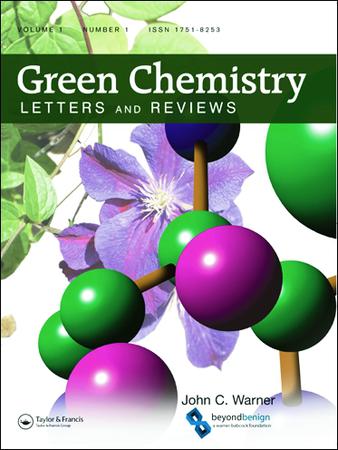走向绿色润滑:废咖啡渣油的摩擦学行为和化学特性
IF 5.1
3区 化学
Q1 CHEMISTRY, MULTIDISCIPLINARY
引用次数: 0
摘要
本文章由计算机程序翻译,如有差异,请以英文原文为准。
Moving towards green lubrication: tribological behavior and chemical characterization of spent coffee grounds oil
ABSTRACT With the EU aiming for net-zero greenhouse gas emissions by 2050, conventional production cycles must be transformed into cradle-to-cradle approaches. Spent coffee grounds are often dumped in landfills, with their potential as high-quality feedstock for biofuel or bio-lubricant production. Spent coffee grounds oil (SCGO) was investigated for its physicochemical properties while having more free acid groups compared to the reference polyalphaolefin 8 (PAO 8), which may cause faster oxidation. TGA results displayed comparable thermal stability of SCGO and PAO 8 for inert/oxidative atmosphere. The oil composition was characterized by ATR-FTIR, elemental analysis, and GC-EI-MS, where a higher oxygen content was found for SCGO, referring to functional ester/acid groups. The tribological behavior of SCGO was studied as lubricant base oil and as a 5% additive in PAO 8. The condition of fresh and tribologically used oils was investigated with High-Resolution-ESI-MS, and the worn surfaces were evaluated by light microscopy and topographic analysis. The results showed a superior friction coefficient of pure SCGO (µ = 0.092) to PAO 8 (µ = 0.129). The 5% SCGO additive in PAO 8 (µ = 0.095) could significantly reduce friction compared to pure PAO 8 on an unpolished 100Cr6 surface. GRAPHICAL ABSTRACT
求助全文
通过发布文献求助,成功后即可免费获取论文全文。
去求助
来源期刊

Green Chemistry Letters and Reviews
CHEMISTRY, MULTIDISCIPLINARY-GREEN & SUSTAINABLE SCIENCE & TECHNOLOGY
CiteScore
9.10
自引率
3.00%
发文量
48
期刊介绍:
Green Chemistry Letters and Reviews is an Open Access, peer-reviewed journal focused on rapid publication of innovative new syntheses and procedures that reduce or eliminate the use and generation of hazardous materials. Reviews of state-of-the-art green chemistry technologies are also included within the journal''s scope.
Green Chemistry Letters and Reviews is divided into three overlapping topic areas: research, education, and industrial implementation. The journal publishes both letters, which concisely communicate the most time-sensitive results, and reviews, which aid researchers in understanding the state of science on important green chemistry topics. Submissions are encouraged which apply the 12 principles of green chemistry to:
-Green Chemistry Education-
Synthetic Reaction Pathways-
Research and Process Analytical Techniques-
Separation and Purification Technologies-
Renewable Feedstocks-
Degradable Products
 求助内容:
求助内容: 应助结果提醒方式:
应助结果提醒方式:


